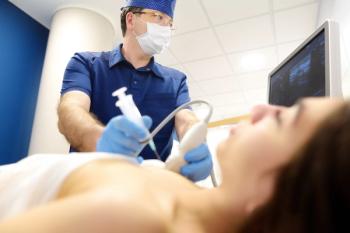
Use of Anxiety, Depression Medication Twice As High Among Cancer Survivors
Cancer survivors in the United States were taking medications to treat depression and anxiety at almost twice the rate of the general population between 2010 and 2013.
Cancer survivors in the United States were taking medications to treat depression and anxiety at almost twice the rate of the general population between 2010 and 2013, according to the results of a study
Based on these numbers, Nikki A. Hawkins, PhD, of the Centers for Disease Control and Prevention, and colleagues estimated that as many as 2.5 million cancer survivors were taking medication for anxiety of depression at that time.
“Placed in the context of previous research, which found that 31% of cancer survivors in the United States sought help for psychosocial concerns by discussing them with their medical provider, our estimate of medication use is more modest and could suggest that even more survivors might benefit from pharmacologic treatment than were receiving treatment at the time of this study,” Hawkins and colleagues wrote. “Nevertheless, the observed rate of medication use in cancer survivors likely reflects a combination of factors that could include survivors’ increased likelihood of having a usual source of care (and access to prescription medications) and an elevated number of physical and emotional burdens after cancer, which seem to follow survivors for many years after diagnosis.”
For the study, the researchers used data from the National Health Interview Survey from 2010 to 2013 to identify adults who had completed both the Sample Adult Core Questionnaire and the Adult Functioning and Disability Supplement. They identified 3,184 cancer survivors and 44,997 adults with no history of cancer.
Cancer survivors were significantly more likely to report taking medication for anxiety compared with the general population (16.8% vs 8.6%; P < .001). Rates of medication use for depression were also almost twice as high among cancer survivors (14.1% vs 7.8%; P < .001), and use of medications for both of these conditions was also significantly increased among survivors (11.8% vs 6.1%; P < .001). Overall, almost one in five survivors was taking medication for one or both of these conditions (19.1% vs 10.4%; P < .001).
“Interestingly, medication use did not vary significantly by time since cancer diagnosis, which is consistent with recent research that has shown elevated rates of depression and mental disorders for cancer survivors as much as 10 years after diagnosis,” the researchers wrote.
Survivors taking medication for anxiety were more likely to be women, have public insurance, or have one or more non-cancer chronic conditions. Increased odds of taking medication for depression was seen in women, non-Hispanic whites, widowed/divorced/or separated survivors, those with a usual source of medical care, and those with a higher number of non-cancer chronic health conditions.
“Although our estimates provide benchmarks for the rates of psychotropic medication use in survivors, they can also inform future research seeking to assess the connections among cancer, medication use, and mental health,” the researchers wrote. “Future work could determine whether survivors taking these medications are also receiving other forms of psychosocial treatment and support and whether cancer survivors are monitored adequately or screened over time to assess their changing psychosocial needs.”
Newsletter
Stay up to date on recent advances in the multidisciplinary approach to cancer.
































































































